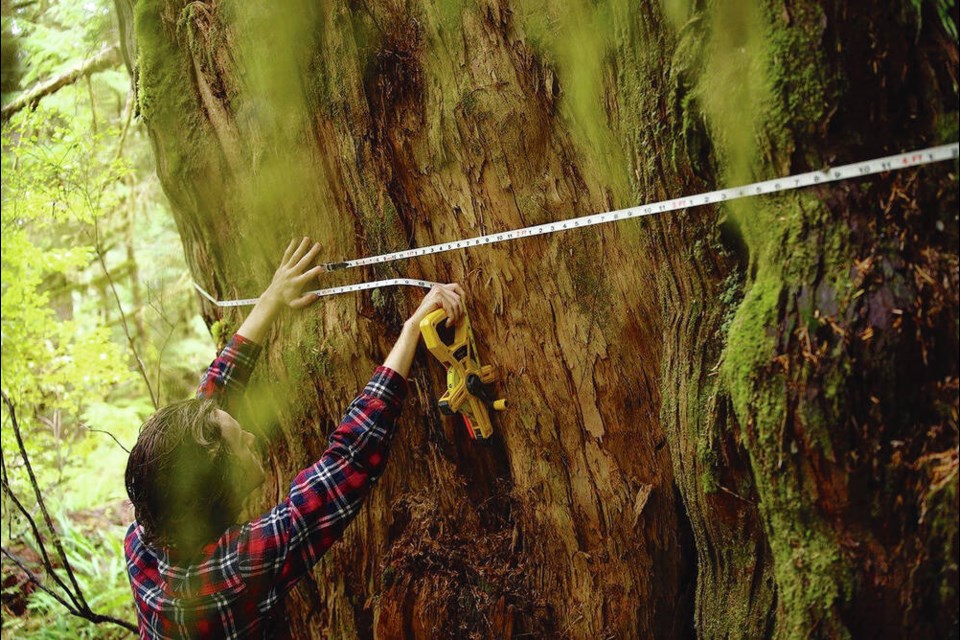A massive western red cedar tree found near Nitinat Lake is large enough to be protected by provincial legislation, but it’s in an area where nearby trees could be logged, which activists say highlights the need to protect intact old-growth ecosystems.
Joshua Wright, an old-growth activist who documents large trees before they’re cut, found the tree in Looper Creek near Nitinat Lake.
He hiked from the creek through the forest before stumbling upon a “stand of massive, massive cedar trees,” most of them more than two metres thick and some more than three metres.
He measured the largest at 3.88 metres in diameter. “It was just like a wall of wood,” he said.
Its size puts it just above the province’s threshold for protection from being harvested, which means that trees within a 56-metre radius will also be protected.
The province sets out the minimum diameter at which trees must be protected, by species. The threshold is highest for western red cedars in coastal zones, at 3.85 metres. For several others, the threshold is above two metres, including yellow cedars, black cottonwoods in coastal zones and Douglas firs on the coast.
While Wright would like to see an end to all old-growth logging, he said at “a bare minimum,” trees with a diameter of more than two metres should be protected, and it’s not enough to protect a patch of trees around the massive red cedar.
“That ecosystem won’t regenerate. Eventually that tree will die and it will be surrounded by a timber plantation,” Wright said.
The Ministry of Forests said in a statement that it is reviewing the Special Tree Protection Regulation and examining the species list and size thresholds “with a goal of protecting even more of these magnificent trees.”
The regulation was created in 2020 to ensure large trees remain for generations to come, it said.
“British Columbians care deeply about our forests, particularly our largest and most iconic like our provincial tree, the western red cedar,” the ministry said.
TJ Watt, campaigner and photographer for the Ancient Forest Alliance, said he agrees that the size threshold for protection should be lowered to encompass more old-growth trees.
“They’re set very high, and they’re very difficult to meet, considering the majority of the biggest trees have now been cut,” he said.
While there remain some gaps to address, Watt said he’s more hopeful than he’s ever been for the future of old growth since the provincial government announced $300 million in conservation funding for threatened ecosystems in the province in late October.
“The progress that’s happened in the past three weeks alone — it’s just been staggering,” Watt said.
Now it’s up to First Nations to decide if they want to create new protected areas, he said, adding it’s critical that activists and others understand that the province can’t unilaterally impose protections over First Nations territory.
“First Nations leadership are ultimately in the driver’s seat around whether old-growth forests get protected or not,” he said.



